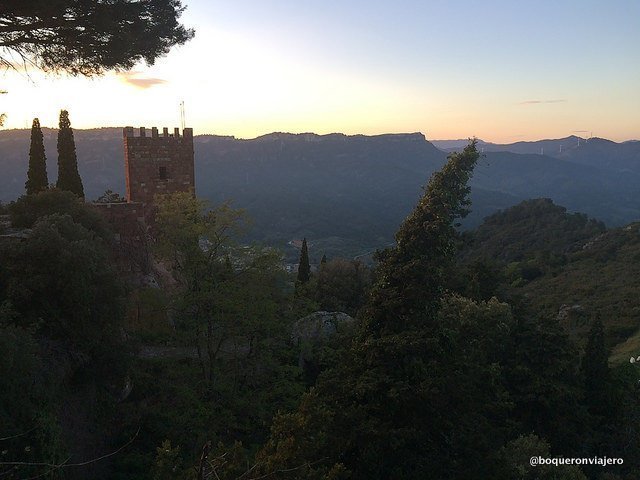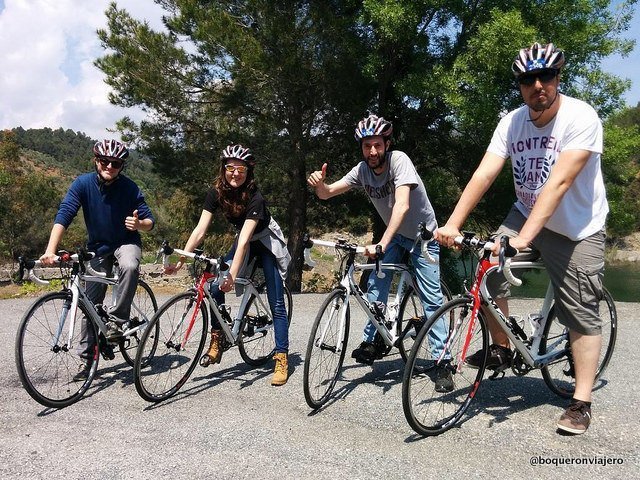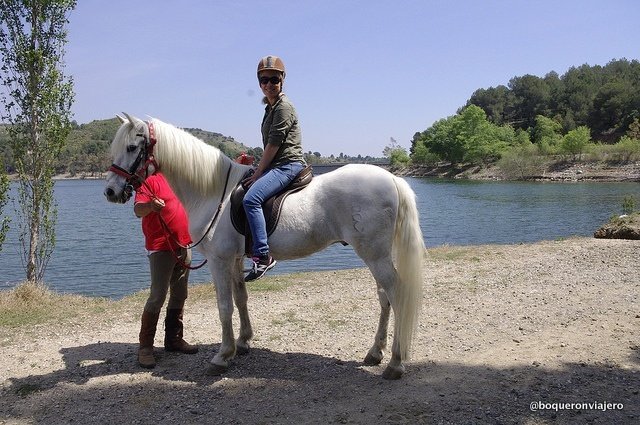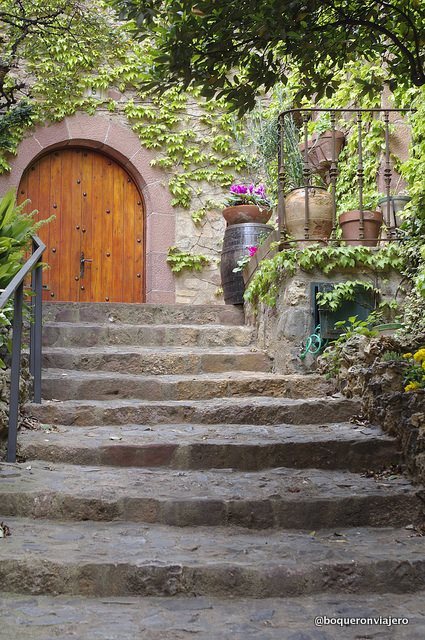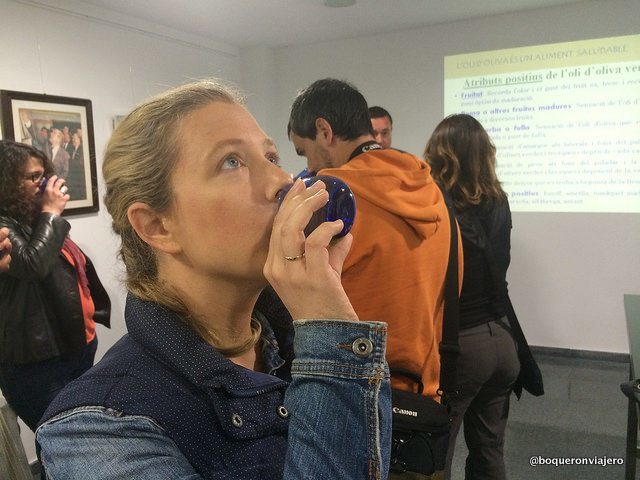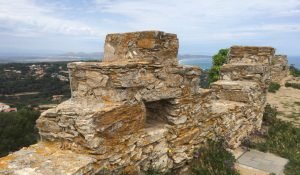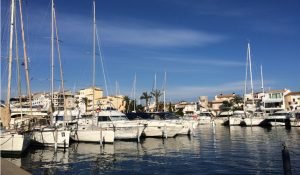Our trip to the Baronia d’Escornalbou was a wonderful surprise between the food, culture and the friendly people.
The year we got married, just after our honeymoon, we were lucky enough to live in Barcelona for a month. Although we spent plenty of time getting to know the city and we didn’t have our own car, we were able to escape the city a few times and discover corners of Catalonia such as Tarragona, Girona, Cadaqués or Sitges. But Catalonia isn’t just the coast, as beautiful as it is. What we didn’t have time for, but had wanted to see, were the beautiful Catalonian inland mountains and towns which are steeped in history.
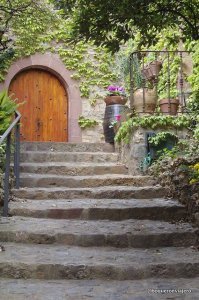 But as they say: that gave us a reason to go back! This time around, on our second visit to Catalonia, we went straight inland. To be exact, to Baronía d’Escornalbou, which is found on the Costa Daurada mountains in the middle of Tarragona’s Baix Camp, close to the famous area of Priorat. During the three days we were there, we travelled through its four municipalities (Duesaigües, L’Argentera, Riudecanyes and Vilanova d’Escornalbou), enjoyed its gastronomic gems and learned about the powerful history that took place in this area close to the coast.
But as they say: that gave us a reason to go back! This time around, on our second visit to Catalonia, we went straight inland. To be exact, to Baronía d’Escornalbou, which is found on the Costa Daurada mountains in the middle of Tarragona’s Baix Camp, close to the famous area of Priorat. During the three days we were there, we travelled through its four municipalities (Duesaigües, L’Argentera, Riudecanyes and Vilanova d’Escornalbou), enjoyed its gastronomic gems and learned about the powerful history that took place in this area close to the coast.
What is there to see in La Baron’â d’Escornalbou?
La Baronía d’Escornalbour was an old medieval barony established in the 12th century. It’s just twenty minutes by car from the Costa Daurada and it offers a completely different landscape, full of beautiful scenery and nature of undeniable beauty. It’s the perfect place to spend a relaxing weekend. We had the opportunity to explore 4 beautiful towns during our visit.
Duesaigües, at the foot of the mountains of Escornalbou Castle
Throughout the duration of our visit, we had the great fortune of being accompanied by Mari Carmen, the Teva Ruta guide, who knows the area inside-out and also organizes many activities in the area.
Our route through Baronía d’Escornalbou began in Duesaigües (Two Waters) which was also the town where we stayed. Duesaigües is an easy town to get around in and there’s also a fascinating historical legacy. I loved the image of people gathering in the square in the good old way, chatting and socializing; it’s something that we shouldn’t ever forget. The Santa María church was constructed in the 14th century and although it’s been rebuilt, you can still see the roots of the past.
Another of the town’s interesting spots is the two viaducts which bridge the ravines of the town and serve as railway tracks. During the Civil War a part of the viaduct was stolen. Because of this, if you look closely, you can see one part is a different color from the other. Without a doubt, the place that I couldn’t wait to see was the Museu de l’Avi de Deusaigües (The Grandfather’s Museum). Artefacts from the past which the ‘Grandfather’ had collected included farming tools, machinery and gadgets which were used on a daily basis. The collection very possibly it could be worth a fortune.
L’Argentera, the Roman lead mine town
Our visit continued through the town of L’Argentera, which, according to legend, is called this because of the lead mines that the Romans excavated in the area. As we continued the tour, I realised two things: how the façade restoration had been respected so that the historic center did not look out of place and that nearly all of the terraces and balconies were full of flowers and flowerpots. In addition, in each restored street, you could look between the stones and see the year in which the construction was carried out.
Riudecanyes and its impressive castle monastery
Riudecanyes is one of the most prominent attractions from a tourist point of view. Its three most representative elements are the streets, the castle and the reservoir. The streets are peculiar because they are named after the days of the week (apart from Thursday). This must be because Thursday is considered (from a religious point of view) to be a very important day and for this reason it couldn’t belong to just one part of the town. The San Mateo Church is also beautiful and if we climbed up the bell tower, from the middle we could see the altarpiece from above and at the top we had spectacular views from the bell tower.
The reservoir was built to provide the town with water after the drought at the start of the 20th century. Alongside the reservoir, you can walk along old windmills and realise the importance that this reservoir has had in the development of the town. Although nowadays it isn’t used for anything but consumption, plans are in motion for water activities such as kayaking on the reservoir which would allow for a more active and attractive use for the area. At one of the points, you can see the difference between the closed blue water of the reservoir in contrast to the sea water which shines from afar right up to the enclosing wall.
And we couldn’t go to Riudecanyes without visiting the impressive San Miguel de Escornalbou castle-monastery. The origins of this castle mix Roman, Visigoth and Saracen roots. We had the opportunity to visit it at night and we were fascinated by the impressive panoramic views of the plain and the distinct towns. If it’s a nice day, you can see up to Tarragona and the Costa Daurada. As soon as we went inside, it was like being transported to the medieval times. Here the guide particularly came in useful for us to enjoy the views, as we already knew the legends and stories behind this beautiful place.
If you have enough time, don’t miss out on the Centro de Interpretación de los Frutos del Paisaje, where you can learn all about everything to do with hazelnuts, olives and other fruits which have had an impact on the area. As well as being a learning experience, we were able to try oils and hazelnuts from the area.
Vilanova d’Escornalbou and L’Arbocet
Vilanova d’Escornalbout is at the foot of L’Argentera, below the Santa Bárbara hill. In this town, the best thing is to wander and observe the differences in the buildings. The parish church of Sant Joan from the 16th century, the Castellet or the Vila House are the three main buildings to see. In terms of the L’Abrocet, it’s surprising to see two towers which are completely different shapes (one is rectangular and the other is circular). In the round tower, according to tradition, was where the Christians would stay, while the Moors would stay in the rectangular tower.
Don’t go without trying …(The wonderful delicacies we tried!)
When we go to a new place, the thing we love to do the most (apart from getting to know the area and the people) is trying the local gastronomy. We always try asking a local where to eat or which patisserie is the best in the town. In this case, Baronía d’Escornalbou did not disappoint.
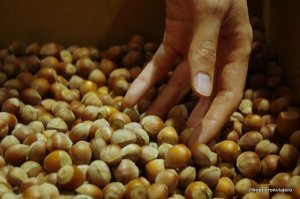 Catalan cuisine is excellent and the area of Baix Camp is no exception. The area is known for its olive oil, hazelnuts and delicious sausages. The two restaurants we tried were El Cunirri in Deusaigües and El Corral in Riudecanyes. El Cunirri Restaurant is a family-run place where we tried traditional dishes cooked with local ingredients. We tried a delicious cod salad, a bruschetta with escalivada (Catalan dish of grilled vegetables) with sardines, and of course, a dish of Butifarra (Catalan sausages). It was all cooked to a very high standard and we left very satisfied.
Catalan cuisine is excellent and the area of Baix Camp is no exception. The area is known for its olive oil, hazelnuts and delicious sausages. The two restaurants we tried were El Cunirri in Deusaigües and El Corral in Riudecanyes. El Cunirri Restaurant is a family-run place where we tried traditional dishes cooked with local ingredients. We tried a delicious cod salad, a bruschetta with escalivada (Catalan dish of grilled vegetables) with sardines, and of course, a dish of Butifarra (Catalan sausages). It was all cooked to a very high standard and we left very satisfied.
El Corral Restaurant was more modern and offered sophisticated dishes. We were surprised by the decor and the beautiful dishes which we were served. We can still taste the carrillada (braised beef or pork cheek) and the fish we tried. And for pudding there was a special dessert which is only made in the town. It was a type of biscuit which is called “caña” because it’s in the shape of a fishing rod. It’s covered in sugar and along with a coffee was the icing on the cake for a meal which was already hugely delicious.
A unique culinary experience
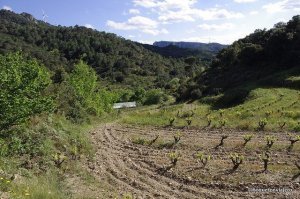 Perhaps one of the things we enjoyed the most during our visit was being able to learn more about the traditional produce of the region. We went to visit a hidden vineyard in the mountains.
Perhaps one of the things we enjoyed the most during our visit was being able to learn more about the traditional produce of the region. We went to visit a hidden vineyard in the mountains.
In Alforja, deep in Baix Camp and close to Baronía d’Escornalbou are the vineyards of Mas del Botó which are of the Tarragona origin denomination. We went in a 4×4 to get there and after having passed and seen the windmills on the way, we were able to try the wines from this vineyard and compare them with Priorat (another Catalan wine). Truly, we enjoyed the wine a lot and the most interesting thing is that it’s all completely environmentally friendly – something that the beehives could attest to. Also the vineyards are right in the middle of the mountains. It was truly spectacular to be able to enjoy the wine and see the beautiful landscape where the grapes were grown.
Another unique experience was having breakfast in an olive plantation. We were picked up from the hotel at the crack of dawn and they took us to the farm where a group of farmers had already prepared a breakfast with a mountain of toast, tomato spread and grilled butifarra! It was a beautiful, sunny day and breakfasting in the countryside was wonderful. Everything was put on the table and like beasts, we attacked it! There was even fish to eat with the bread and of course, a carafe of wine. After breakfast, they told us all about the olives.
To end our culinary adventure, we enjoyed a local olive oil tasting. We were surprised because the oils were milder than Andalusian oils, which have a little kick. It’s great to know that there’s such variety, especially when you want a more informed decision on what olive oil to use in a recipe.
For sporty types…there’s plenty!
Apart from hiking (an obvious option with such beautiful landscapes in the area) there are many sport activities in Baronía d’Escornalbou. We had the opportunity to go horse-back riding (it was Abby’s first time and the trainers knew how to help her and make her feel comfortable throughout the ride). Pedro went bike riding and although there was only enough time for a short ride, he loved it. There is something for everyone and with the fresh air from the mountains, it’s exactly what we fancied doing.
Where to stay in Baronía d’Escornalbou?
Although there are many accommodation options in the area (from hostels to country houses) we’re going to tell you about where we stayed. It’s called the Casa Vella del Pantá in Riudecanyes. With views of the reservoir and the sea in the background, right in the middle of the countryside, it’s the perfect place to switch off and relax. The house is run by a couple who did everything in their power to make this eco-friendly house a home. The only downside is that the house is a complete rental, able to accommodate up to 22 people.
Check out this link to find more places to stay in the area
100% Ruskommended
We didn’t know a lot about this inland area of Catalonia when we got off the train. First and foremost, it has to be said that it has been an unforgettable journey because of the food as well as the people we met and the beautiful and historic sites we visited. I think we will never forget the magical views from the castle or the houses which looked like they’ve been taken straight out of a fairy tale. Why go to Baronía d’Escornalbou? For us, it’s simple. It’s an area of Catalonia which is very different from those you can see in Girona, Barcelona and the Costa Daurada. You will have an authentic experience, people are warm and friendly and we’re sure you’ll be able to relax and be ‘off the grid’. What more could you want from a weekend escape?
**We were invited to this trip by The Baix Camp Tourism Office. In no way were we swayed to write a positive review. As always, all opinions are our own.




